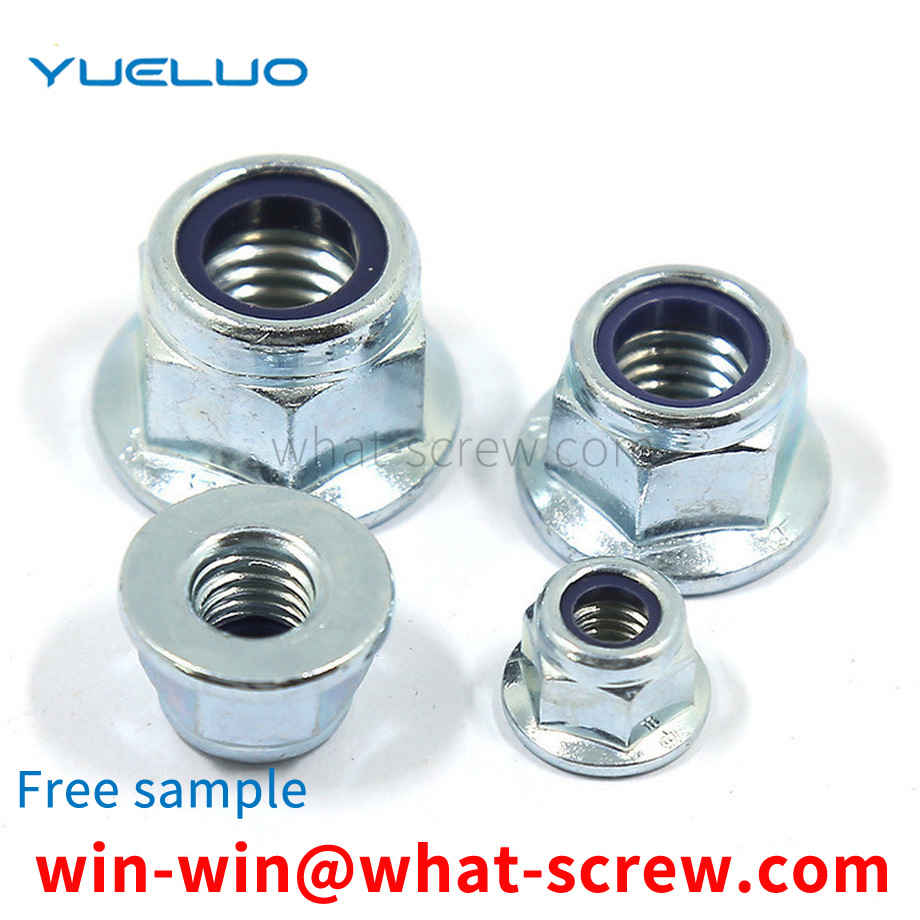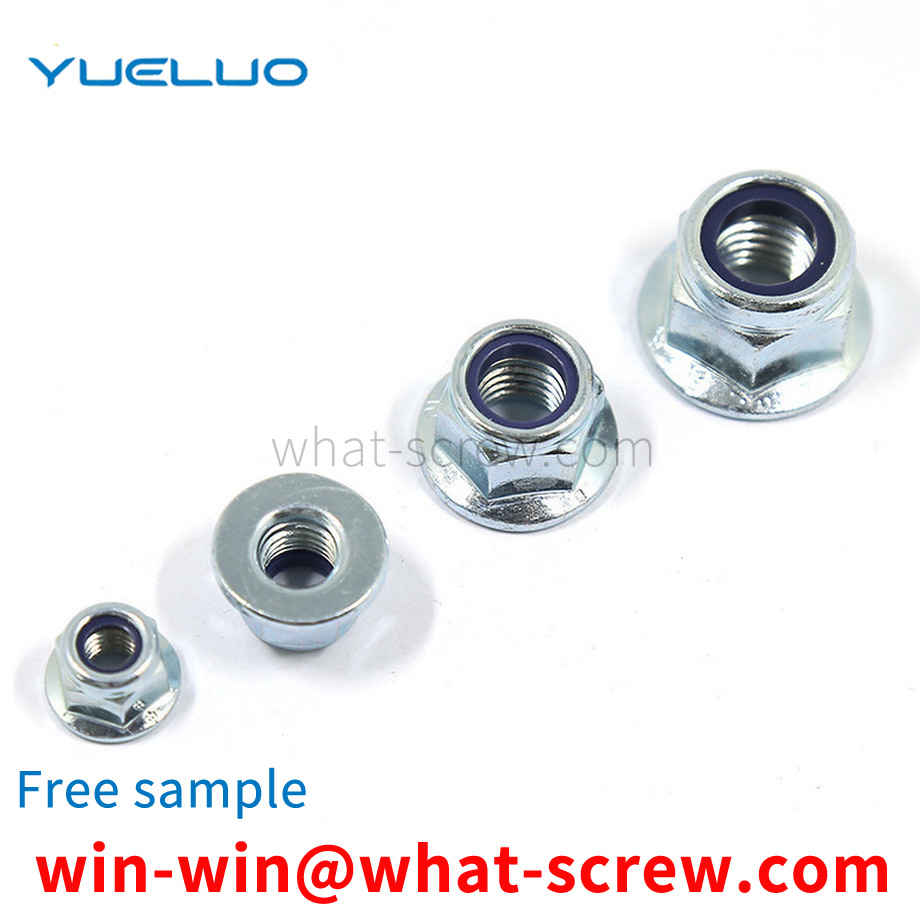Cross recessed pan head screws refer to cross recessed machine wire screws, which are represented by the letters PM. The country stipulates that the thread specification is M1.6-M10, the performance level is 4.8, A-50, A2-70, CU2, CU3 and AL4, H-type and Z-type cross recessed, and the product grade is Class A cross recessed pan head screws . If other technical requirements are needed, they should be selected from the current standards (such as GB/T196, GB/T3106, GB/T3098.1, GB/T3098.6 and GB/T3098.10).
The process factors that affect the quality of high-strength fasteners include steel design, spheroidizing annealing, peeling and dephosphorization, drawing, cold heading, thread processing, heat treatment, etc., and sometimes the superposition of various factors.
Now the screw itself is made of metal, so it is easy to rust, especially screws in harsh weather environments that are exposed to the air for a long time, such as air conditioners, wires, etc. In the existing technology, the shape of the screw has been fixed, and the structure of the screw itself is composed of a shaft with twill in the middle and a polygonal structure with stripes on the outside. OK, but because of the installation of some equipment, it needs to be exposed to the air for a long time. For example, the outdoor unit of the air conditioner must be installed in the outdoor area, and the outdoor can not be sheltered from wind and rain, so after long-term sun and rain, the screw The surface is easy to rust. If the rust is serious to a certain extent, the nut will be embroidered to death. Once the external machine needs to be disassembled one day, the embroidered screw will lose its use value and give workers to the workers. The disassembly and assembly of the screw has caused a lot of trouble, because the embroidered screw cannot be unscrewed directly. The only method used is to cut off the shaft in the middle of the screw with a hacksaw, or discard the entire screw structure. Since the shaft in the screw has been inserted into the middle of the wall, this waste is not good for both aesthetics and safety. To solve the rust problem of the screw, the existing technology is to improve the material of the screw, or to maintain it regularly, but this method itself is time-consuming and labor-intensive, and it is a waste of resources.
Subject content and scope of application This technical requirement specifies the technical requirements for the manufacture, installation and inspection of high-strength bolted joints of mobile machinery and equipment. Contents not specified in this technical requirement shall be implemented in accordance with relevant national standards. This technical requirement applies to mobile machinery steel structures that require high-strength bolted connections. This technical requirement applies to quality control and construction methods for in-plant and on-site installations. 2. Joint surface treatment 2.1 For friction type high-strength bolt connections, the joint surfaces at the joints are required to be in close contact with each other and have a sufficient friction coefficient. When the design drawing does not specify the treatment requirements for the joint surface, the treatment shall be carried out according to the following regulations: sandblasting or shot blasting the joint surface of high-strength bolts, remove impurities such as rust and oil stains on the surface, and reach the Sa2.5 standard , the roughness is 50 ~ 75μm, and the friction coefficient shall not be lower than 0.40. When there are regulations in the drawings, follow the regulations in the drawings. 2.2 The friction surface of the treated high-strength bolt connection should take protective measures to prevent contamination with dirt and oil. It is strictly forbidden to make any marks on the friction surface of the high-strength bolt connection. During storage in the factory, or during transportation, to the installation site, special precautions should be taken to prevent contamination of the connection surfaces. The installation unit should pay special attention to protecting the cleanliness and friction surface characteristics of the connecting plate of the high-strength bolt and the connecting surface of the parent body. It is not allowed to use a grinder to grind the connecting surface of the connecting plate and the connecting surface of the parent body. 3 Inspection of the anti-slip coefficient of the friction surface of high-strength bolts The inspection of the anti-slip coefficient should be based on the steel structure manufacturing batch, and each 2000t of a single project is regarded as a manufacturing batch, and those less than 2000t are regarded as a batch. When two or more surface treatment processes are selected, each surface treatment process needs to be inspected. Each batch of three groups of specimens. If the connection is diffused to an external enterprise, each corresponding enterprise shall conduct an anti-slip coefficient test. 3.1 The test piece used for the anti-slip coefficient test should be processed by the factory or the diffusion enterprise. The test piece and the representative steel structure member should be of the same material, produced in the same batch, using the same friction surface treatment process and have the same surface state. And use the same batch of high-strength bolt connection pairs of the same performance level and store them under the same environmental conditions. The anti-slip coefficient test is carried out according to the test method of GB50205 Code for Acceptance of Construction Quality of Steel Structure Engineering. 3.2 The minimum value of the anti-slip coefficient inspection must be equal to or greater than the design specified value. When the above specified values are not met, the friction surface of the component should be reprocessed. The friction surface of the treated component is re-inspected. 4. Connection and installation of friction type high-strength bolts for steel structures 4.1 Preparations before installation 4.2 Select qualified bolts, nuts and washers. The guarantee period for the torque coefficient of the connecting pair is six months from the date of delivery. 4.3 Bolts, nuts and washers in the following cases are unqualified products and are prohibited from being used. a. The source (manufacturer) is unknown; b. The mechanical properties are unknown; c. The torque coefficient k is unknown; d. Defective; e. No performance test report attached; f. Mixed with other batches of bolts; g. Bolts with insufficient length, that is, the bolt head does not show the end face of the nut after tightening. Generally, the length of the end face of the nut to be taken out is 2 to 3 threads. h. The torque coefficient of the connecting pair exceeds the warranty period. Special attention should be paid to waterproofing during transportation and storage. 4.4 Before the construction of the large hexagonal head high-strength bolts, the torque coefficient of the high-strength bolt connection pair should be re-inspected according to the factory approval. Each batch of 8 sets should be re-inspected. Less than or equal to 0.010. The re-inspection method of the torque coefficient shall be carried out in accordance with the provisions of GB50205 Code for Acceptance of Construction Quality of Steel Structure Engineering. The installation of high-strength bolts should be carried out within a short period of time after the test.
The height of the existing assembly devices is fixed, and the height of the workers is different, so it is very inconvenient to use, resulting in a decrease in efficiency. With the progress of science and technology and the development of society, people have proposed higher assembly devices. Therefore, we propose a shaft card assembly device to solve the above problems.
We have many years of experience in the production and sales of screws, nuts, flat washers, etc. The main products are: steel heat-treated T-nuts, screws and screws, stainless steel round head machine screws with washers, cylindrical bolts and other products, we can provide you with suitable tightening. Firmware Solutions.



















 Service Hotline
Service Hotline




